Think of the last thing you learned to do.
Whether it was learning to knit...
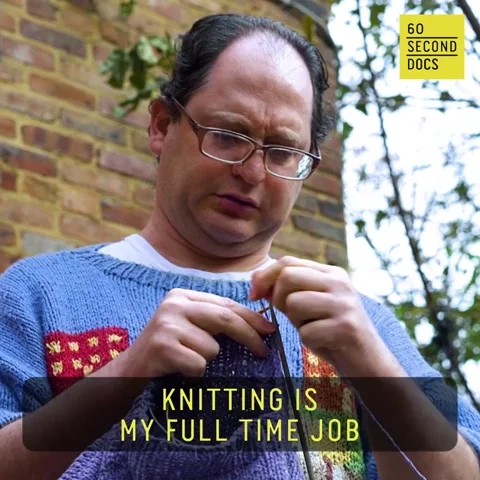
...or how to fix something...
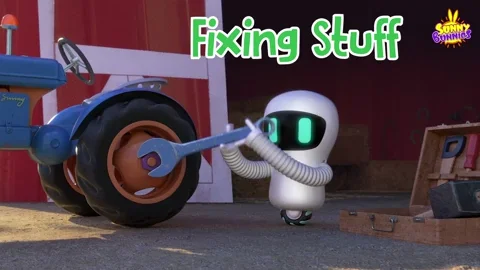
....or the latest TikTok dance...

...you went through some predictable steps:
you made a plan
you monitored your progress
you evaluated your new learning
This is metacognition in action! Teaching students to use metacognitive strategies like these will help them learn throughout their lives.
What is metacognition?
Metacognition is thinking about how you think and learn.
We approach learning opportunities with knowledge of:
the task
ourselves as learners
strategies we found effective in the past
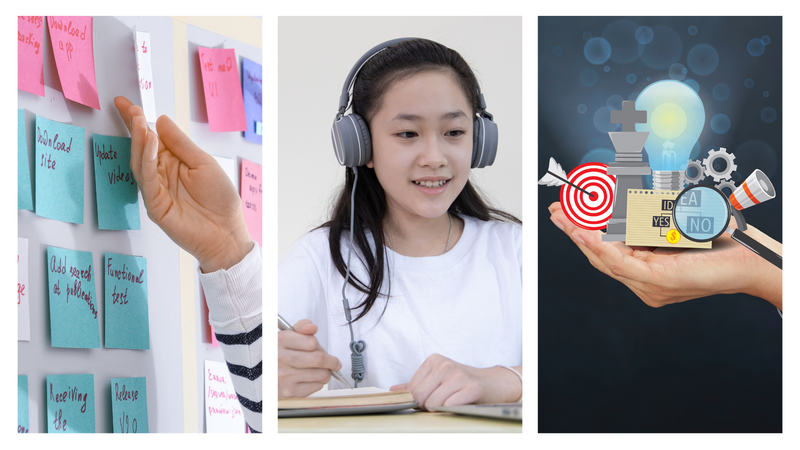 Strong metacognition creates self-aware problem solvers, who take control of their own learning.
Strong metacognition creates self-aware problem solvers, who take control of their own learning.
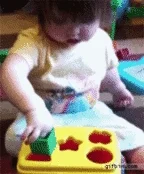
Who is the most successful learner?
 Andre does well in school. When learning new content, Andre listens closely and does exactly what the teacher tells him to do. He completes worksheets, memorizes information to ace each test, and usually forgets most of what he learned after the unit is over.
Andre does well in school. When learning new content, Andre listens closely and does exactly what the teacher tells him to do. He completes worksheets, memorizes information to ace each test, and usually forgets most of what he learned after the unit is over.
 Kiera does well in school. When learning new content, she plans out how she'll learn. As she learns, she monitors her understanding and notices any confusion so she can readjust. She also reflects on the new things she learns to think about when she might use them in the future.
Kiera does well in school. When learning new content, she plans out how she'll learn. As she learns, she monitors her understanding and notices any confusion so she can readjust. She also reflects on the new things she learns to think about when she might use them in the future.
Quiz
Is Andre or Kiera most likely to be successful as a learner in high school and beyond?
Explicit Instruction to Support Metacognition
The Education Endowment Foundation's Guidance Report for Metacognition and Self-Regulated Learning found that metacognitive skills can be taught and developed over time. Teachers can support this development by providing explicit instruction in these skills. 
7 Step Model for Teaching Metacognitive Strategies
While students will benefit from isolated teaching about metacognition, teachers at all levels will get the most impact by embedding the explicit teaching of metacognitive strategies into their content. The EEF's Guidance Report for Metacognition and Self-Regulated Learning recommends these seven steps for teaching metacognitive strategies within any content area:
Click the play button in the audio player above to hear a description of the text from the image below.
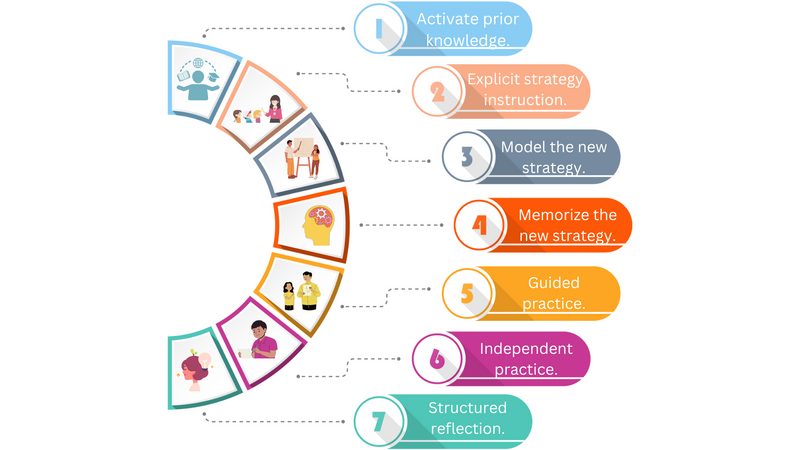
The 7 Step Model in Action
Let's see what the model could look like in an elementary reading classroom.
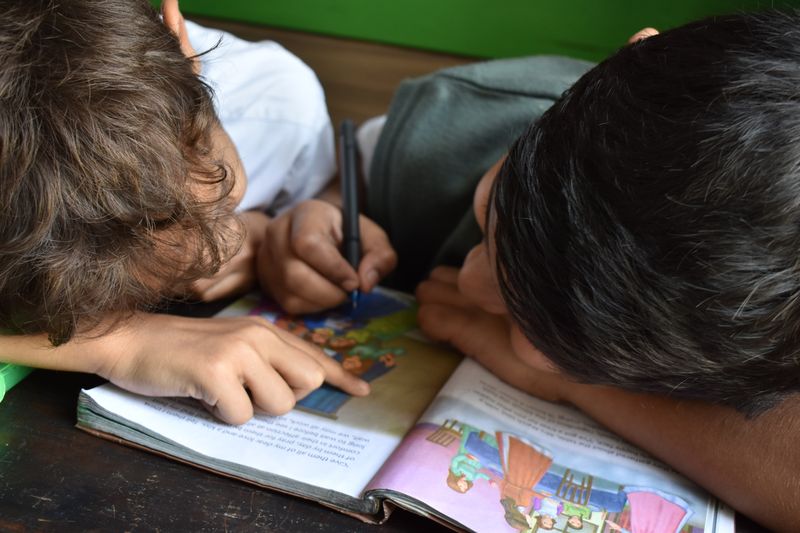 Photo by Andrew Ebrahim on Unsplash
Photo by Andrew Ebrahim on UnsplashStudents are learning to compare and contrast different versions of the same fairytale, using a Venn diagram.
Activate Background Knowledge: The teacher asks students to discuss what they remember about the two versions of Cinderella they read in school.

Explicit Strategy Instruction: The teacher introduces a Venn diagram and explains how it can help organize their ideas as they compare and contrast the two stories.
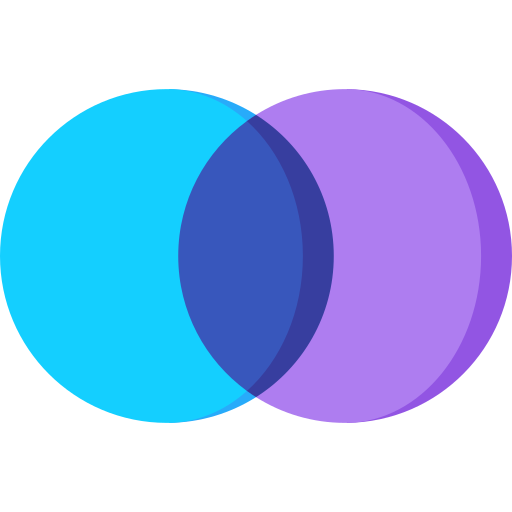
Modeling the Strategy: The teacher uses the earlier discussion to fill in parts of the Venn diagram.

Memorize the Strategy: The teacher checks for student understanding of the strategy and its purpose through classroom discussion.

Guided Practice: The teacher continues to model filling out the Venn diagram, this time with input from the students.

Independent Practice: Students fill out their own Venn diagram on two versions of another fairytale they read.

Structured Reflection: The teacher leads students in reflecting on how successful they were in comparing and contrasting using a Venn diagram and how they might use a Venn diagram in the future.

Quiz
True or False: As another option for Step 6, you could have students complete a Venn diagram on the two Cinderella books for independent practice.
Developing Andre's Metacognition
Remember Andre?
 Choose the best way(s) for Andre's teachers to develop his metacognition:
Choose the best way(s) for Andre's teachers to develop his metacognition:
 A. Embedding reflection into daily lessons
A. Embedding reflection into daily lessons
 B. Daily lectures covering course content
B. Daily lectures covering course content
 C. Using a lot of worksheets each day
C. Using a lot of worksheets each day
 D. Demonstrating strategies he can try
D. Demonstrating strategies he can try
Quiz
Which practices will support the development of Andre's metacognition?
Take Action
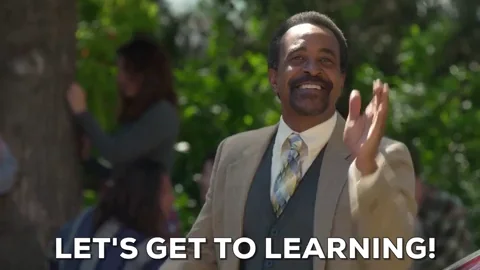
Are you ready to develop metacognition in your classroom?
Your feedback matters to us.
This Byte helped me better understand the topic.
